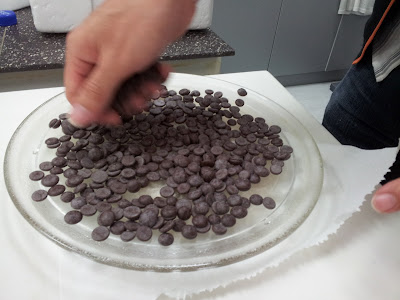Here's some of our latest attempts at viewing the Sun using other techniques, which can also be used for the upcoming Transit of Venus.
Projection
This involves projecting or reflecting the Sun's image on to a screen so that it can be viewed indirectly.
It can be achieved in various ways, the simplest of which is probably "pinhole projection":
 Take a large piece of card, poke a hole in it with a pencil or skewer (try placing some bluetack underneath as a base so that you don't poke your finger). Hold the card with the hole, in front of another piece of card, hold them up in line with the Sun so that a small image of the Sun can be seen on the rear card.
Take a large piece of card, poke a hole in it with a pencil or skewer (try placing some bluetack underneath as a base so that you don't poke your finger). Hold the card with the hole, in front of another piece of card, hold them up in line with the Sun so that a small image of the Sun can be seen on the rear card.Remember the idea is to look back at the rear card. NEVER LOOK DIRECTLY AT THE SUN THROUGH THE HOLE.


In order to show that this is really an image of the Sun and not simply a image of the round hole, I made another card, this time with three holes each of different shape. When held about arm's length apart to focus the light, each hole produces a round image of the Sun.
Another method is "telescope projection", whereby you hold or mount a screen/card behind a telescope, which is pointing at the Sun.
Looking at the telescope's shadow helps you adjust the position of the telescope to safely find and focus the Sun's image. Once again never look directly through the telescope, as the intense sunlight will cause permanent eye damage.
We also tried "binocular projection"(see pictures below), which is similar to what I just described for the telescope projection above, except that you end up with two images from the pair of lens. Experimenting with the distance of the card/screen and the focus will alter the size and brightness of the image.
Building another cover or screen around the binoculars/telescope will help provide extra shadow in order to enhance the Sun's image.
If I had the time I would have made a more sturdy support or base to mount the screen to the tripod so that I wouldn't have to keep holding it or balancing it on my head.
A good example of such a mount can be found here in this video I found on YouTube:












































